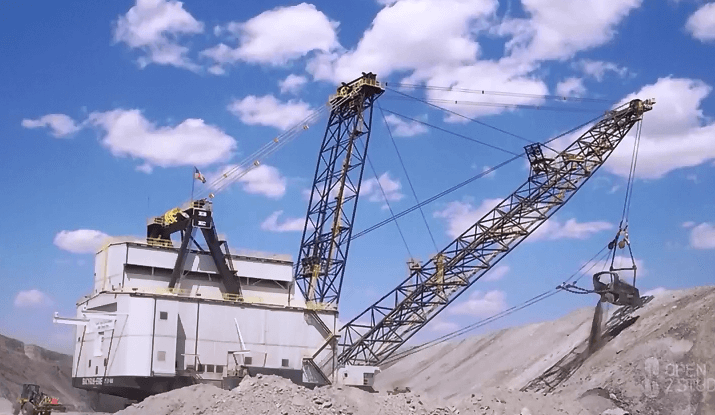5 Easy Facts About Excavator Shown
Wiki Article
Trencher - An Overview
Table of Contents7 Easy Facts About Excavation Companies DescribedIndicators on Demolition You Should Know3 Easy Facts About Excavation Contractors Near Me ShownThe 9-Minute Rule for TrencherAll about Excavation Companies


Scrapers or Pans dig deep into dirt in one location, haul as well as discard the dirt in another area (excavation companies). It is difficult to match the efficiency of scrapers for cut/fill soil operation if the haul distance is less after that a mile. Scrapers are usually pulled by a rubber tire wheel tractor and also are in some cases pressed with the cut area by a bulldozer.
There are lot of times that scrapes are not used for site grading and also a dump vehicle is utilized: the haul might be to long, the haul might cross roads where scrapes are not allowed, hard rock may be encountered, devices accessibility, and so on. Unload vehicles are in typical use and probably call for little conversation.
"Rock body" beds, on the other hand, have no tailgates and also can discard any kind of size rock, although their volume capacity is diminished. Compaction Tools raises the density of the soil and in some cases provides a smooth, rolled surface area.
The Best Strategy To Use For Concrete Contractors
From a basic test pit to percussion exploration to core exploration the proprietor has increasingly much more pricey alternatives that generate progressively much better information regarding the site underground. For instance, the Proprietor on a 100,000 SF structure job may authorize twenty dull locations with split spoon soil samples taken until rock is reached and also after that core examples of rock.Understanding the type and quality of rock (from the core samples) as well as place of rock (from the soils boring) is a real benefit in jobsite preparation. On the other hand, the Owner of a 100,000 SF building might determine to wage no geotechnical testing whatsoever. The choice concerning geotechnical screening is generally made by an Owner with no input from the Building Manager.
The section on Dirts as well as Geology assists you understand the terms in the geotechnical record. A knowledge of the approximate location of the rock assists the Construction Supervisor to prepare the series of actions complying with rock excavation. If rock is in one edge of a huge structure task, for instance, the earth excavation can start at the contrary end of the building in order to start structure job soonest.
Beginning the structure job early would be a good idea if the rock might be gotten rid of by ripping. Nevertheless, if the rock is exceptionally hard as well as calls for significant blasting, it may be prudent to hold structure job until the blasting is completed. The Construction Supervisor need to collaborate these kinds of choices as well as make helpful resources use of all the technological day available.
The smart Trick of Excavation Companies That Nobody is Discussing
Unidentified excavation states that all rock or various other unanticipated materials (excluding unsafe materials) experienced in the sitework will certainly be the duty of the Contractor at no change in agreement expense. An unclassified excavation is less complex from a book-keeping viewpoint and also places the duty for geotechnical conditions onto the Sitework Professional.Exactly How Water Influences Sitework? It's fantastic what a hefty rainfall can do to a construction task. Before the rainfall, the website might be dry, heavy equipment successfully relocating earth, the various other professions efficiently doing their work. Within hrs the task can be a sloppy, mud-hole with worker effectiveness cut to regarding 10%.
In the majority of locations of the globe, the Construction Manager must keep in mind a simple reality: IT WILL CERTAINLY RAINFALL. Great preparation can lessen the damages as well as interruption of a heavy rain to a jobsite. Often the excavation and also grading is left to the Sitework Professional (and also their Foremen is liable to supervise and guide the hefty equipment and drivers).
The Construction Supervisor must be continuously mindful of what rainfall will do to the task site. It is not uncommon for the Sitework Supervisor to work their hefty devices for optimal performance and wish it doesn't rain. One of the most effective methods to plan for rain is to slope all qualities to drain and to smooth rolled the surface area before a rainfall.
Demolition Fundamentals Explained
The Building and construction Manager have to be perceptive adequate to guarantee that hefty rain does not quit work on the job much longer than essential. Daily discussions with Sitework Foremen might be called for to attain this objective. Any type of time excavation is needed below the existing water level on a project, the procedure of dewatering need to be considered.In a genuinely cohesive dirt, the water takes a trip so gradually via the clay or silt that dewatering is not generally essential for their explanation the fairly brief time of excavation. Dewatering might be needed for a single footing excavation or for a whole project website. One of the most common dewatering approaches are trench drains, deep wells and well factors.

Ground water seepage can also be decreased by cutoff approaches such as sheet loading. The prices for dewatering can be astonishing, including devices rental, labor as well as electrical power (or fuel). High dewatering prices have faded the profit margins on much too numerous tasks. The numerous variables provided below make the job of estimating dewatering prices extremely difficult, as well as really inexact.
This option must constantly be thought about when assessing the prospect of dewatering. Certainly the alternative is just sensible if gravity can run the water to reduced ground. Trench drains can be reduced with a backhoe as well as filled up with a crude, granular material (# 4 stone as an example), yet treatment must be exercised in selecting the water electrical outlet type and place.
The Buzz on Demolition
A siphon, necessarily, uses air pressure to bring water from one altitude, up over an obstacle, to a lower altitude. The pipelines in a siphon system have to be closed and also some ingenuity is usually called for to completely load the siphon pipe. The siphon pipe should be complete for the siphon to begin.A deep well consists of a pump, pipe and an upright well casing. The pump consumption is at the base of the well casing (generally some crushed rock is put there as a filter tool) (mini excavator). The water is inflated the hose, out of the well covering, as well as to a suitable discharge area.
In other a coarse sand, as an example, a big area can be pumped to near the pump consumption elevation. A less absorptive soil, on the other hand, decreases the performance of a deep well. Because the pump is generally at the end of the deep well, there are no elevation constraints due to vacuum lift, as well as deep wells can decrease the groundwater over 50 feet.
Under of the wellpoint there is a 2 foot long screen as well as shutoff, water jets out of this valve and also creates an opening into which the wellpoint pipeline can be lowered. This opening is commonly made a larger diameter (as an example 10 inches) to enable a coarse sand backfill to aid filter the water (trencher).
Report this wiki page